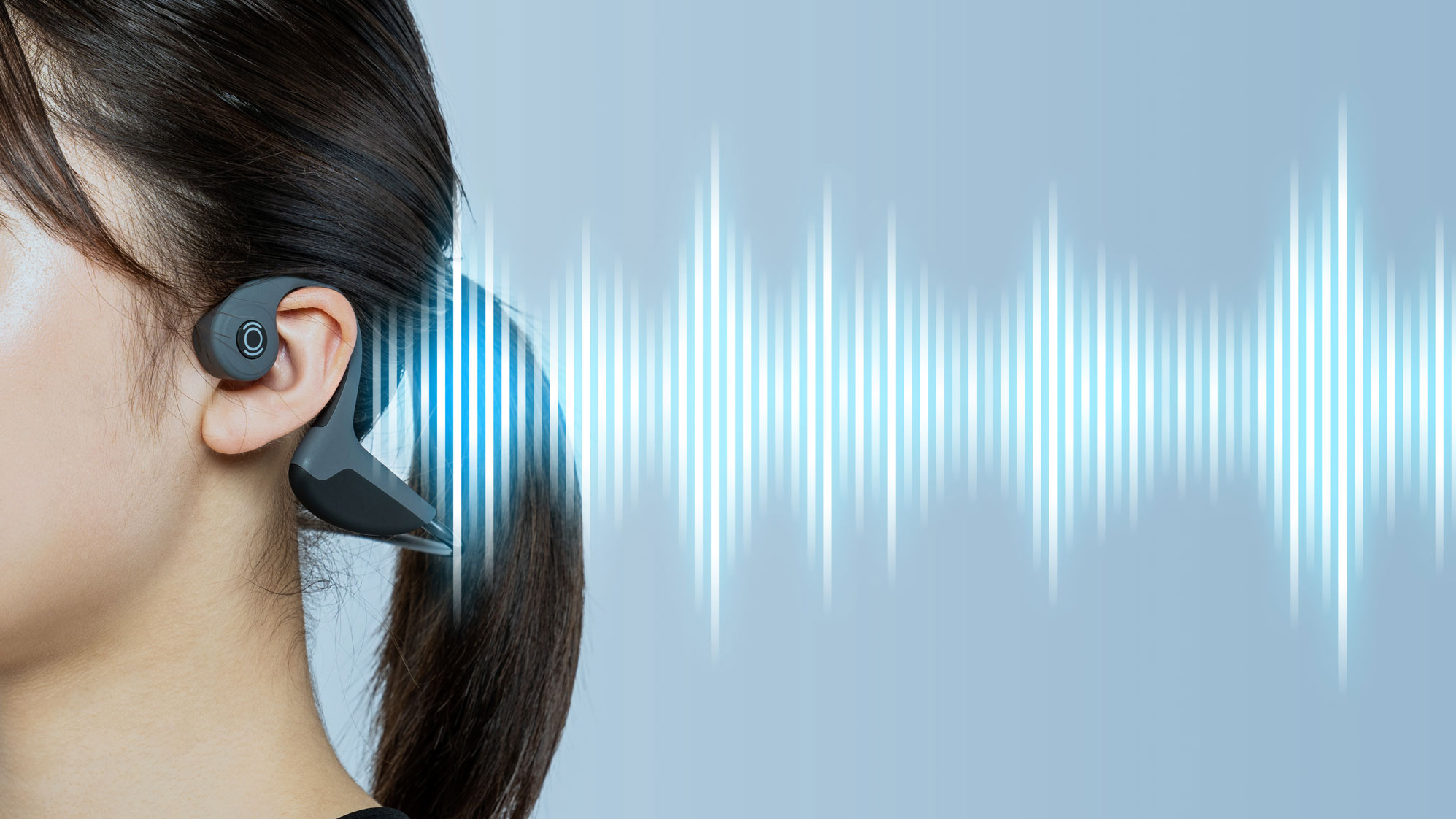
Bone conduction earphones incite a lot of curiosity in people. How can you hear music when nothing is in your ear? The curiosity and confusion are all understandable. And this article will assist you in understanding this technology better.
For those of you who don’t know, bone-conduction earphones were primarily created for physical activities and sports with the aim of the wearer being able to listen to their surroundings while they exercise. They consist of a strap that goes around the back of your head and a pair of pads that sit outside your ears on your cheekbone right next to your tragus.
The first bone-conduction headphones were patented in 1994, but the best bone conduction headphones (and by extension, some of the best running headphones) are significantly more advanced Bluetooth-connected offerings these days.
How do bone-conduction headphones work?

So, how do they work? The short answer is they work by transmitting sound vibrations along your cheekbones instead of through your cochlea like regular earbuds do. Let’s look at the two in detail:
- Regular earbuds pass sound vibrations through the air along the eardrum. They make the eardrum vibrate which passes the information along to the cochlea.
- In contrast, bone-conduction earphones transmit sound vibrations along your cheekbone into your auditory nerves, completely bypassing your eardrum. The sound directly reaches your cochlea through the bone.
A cool fun fact: this is the same approach Beethoven used to continue making music after he lost his hearing. He would hold a conducting baton between his teeth as he played the piano. The baton would allow the sound vibrations produced by the piano to travel to his inner ear.
Those vibrations would be processed by his brain as sound and that’s how he’d be able to make sense of the notes. Interestingly enough, this is also how sea mammals communicate underwater. Moreover, the very first hearing aids also used this technology.
Do bone conduction headphones work well?

Users like the feeling of their ear canals being free instead of having something pushed into them at all times. Since they rest on the top of your cheekbone and aren’t inserted into your ear, you feel more comfortable and your ears are happier, too.
Another very important advantage of this kind of headphones is that they allow you to stay present in terms of what’s going on in your surroundings. Since there’s nothing in your ear, you’re able to fully hear all ambient sounds, and obviously, way clearer than any regular earbud’s ambient mode would allow you to. This is a big advantage in headphones that are designed for outdoor use.
Another great feature these headphones offer is that they’re way more hygienic than your regular buds. Again, since nothing is touching your ear canal, there is no transmission of germs. I think we’ve all seen how disgusting the part of an earbud that goes inside your ear can sometimes get. It’s great that bone-conduction earbuds don’t feature the same issues.
Additionally, and this has lightly been touched on above, bone-conduction headphones are ideal for folks with hearing deficiencies. Since they bypass the eardrum and work solely with the help of vibrations, they make for an excellent solution for people in this group.
Lastly, but very importantly, these headphones are great for your ear health. Since they don’t directly come in contact with your eardrums, they don’t damage your hearing. A lot of people dismiss or underestimate the serious impact that listening to music at a loud volume consistently for extended hours can have on their ears until they begin to realize how it has affected their hearing. As bone-conduction earbuds are mounted externally, you don’t need to worry about your eardrum being damaged.
Should I get bone-conduction headphones?

While bone-conduction earphones have a plethora of advantages, they’re not without some flaws too. To begin with, and this is fairly obvious, the audio quality is not the same as what you get with regular earbuds. Of course, if you don’t have a pair of buds actually going inside your ear, the passive noise isolation won’t be as impressive. Hence, the sound doesn’t feature the same kind of clarity, and while you’d be able to listen to your music, you won’t enjoy it as much as you would with regular earbuds. If you’re a hardcore audiophile and the way your music sounds like matters a lot to you, even when you’re out on a run, bone-conduction headphones aren’t for you.
Also, bone conduction headphones that don't fit properly tend to get quite uncomfortable. Imagine a pair of pads resting on your cheekbone for an extended period of time: you might argue that even regular earbuds get uncomfortable when they’re worn for too long. It all comes down to your priorities and needs.
Closely related to the last point is that it’s sometimes hard to maintain a stable fit with bone-conduction headphones. Since they’re not securely plugged into your ears, they tend to move in place, causing annoyance especially when you’re engaged in a physical activity.
Whether or not you decide to go for these is up to what you’re looking for in your next pair of cans. If their pros outweigh their cons for you, you should definitely consider investing in a pair, as even some of the best waterproof headphones work on bone conduction technology. Folks who are looking for the ideal workout headphones, but don’t want bone-conduction technology, can look at our top picks for the best workout headphones.







